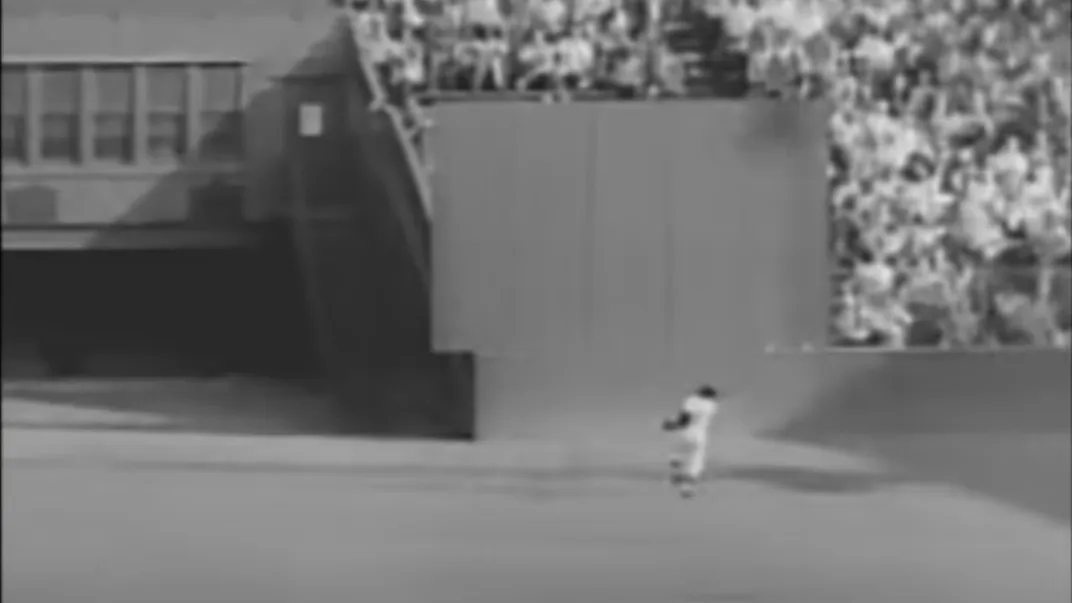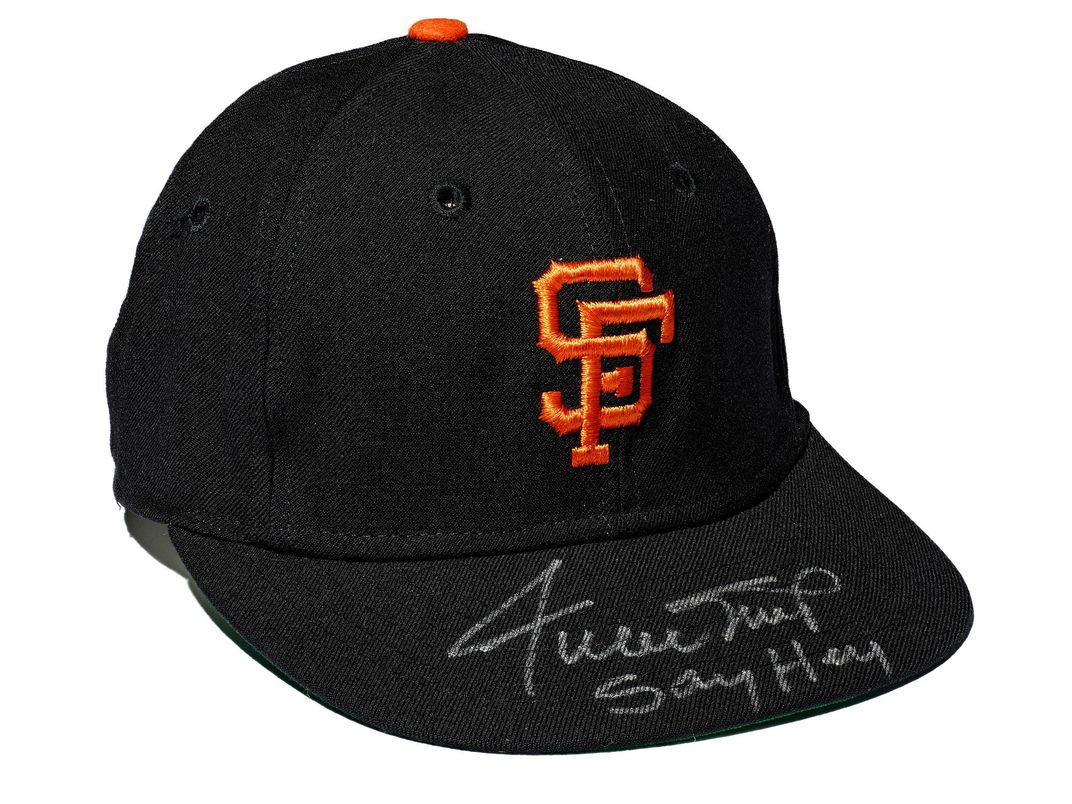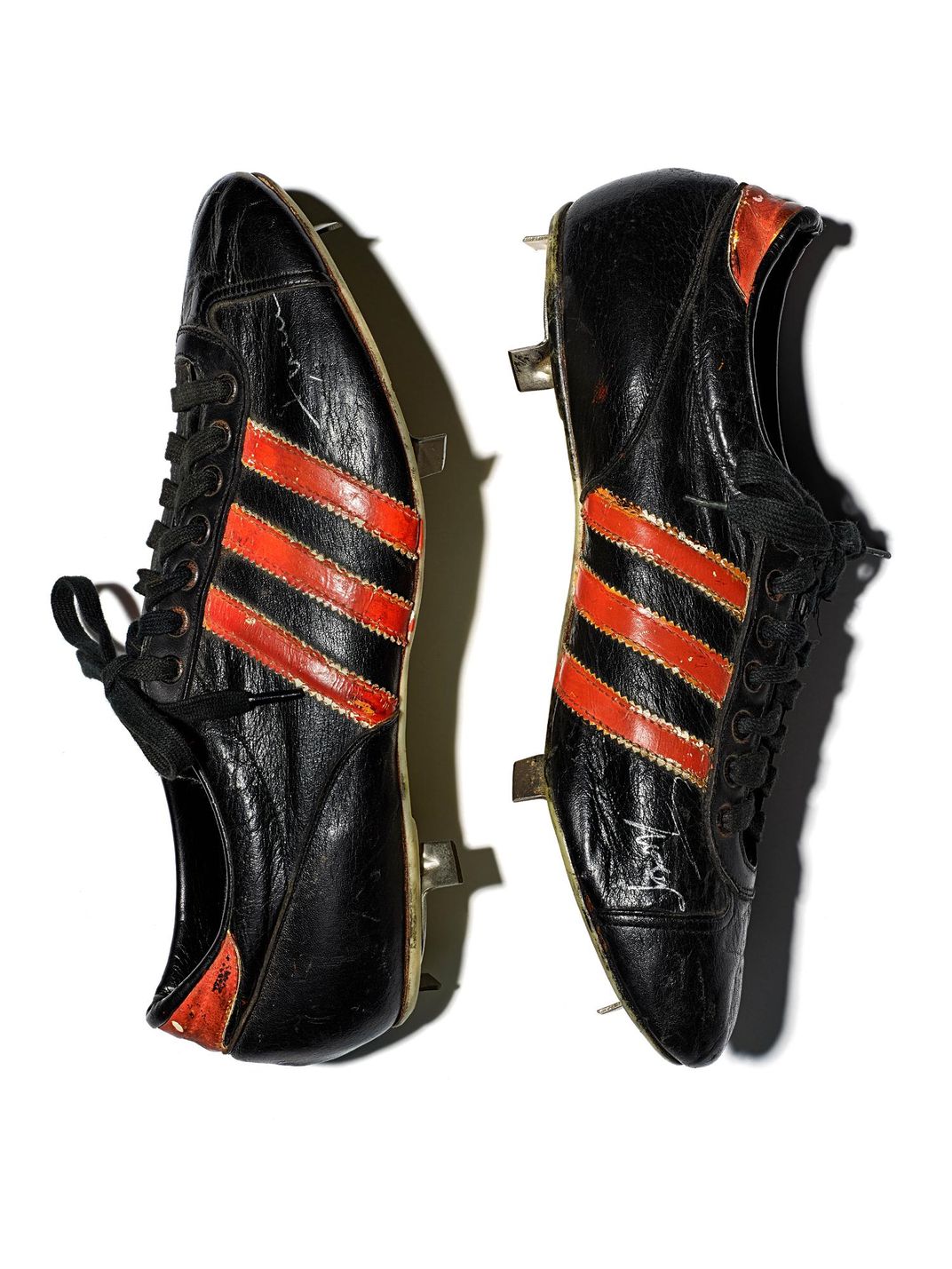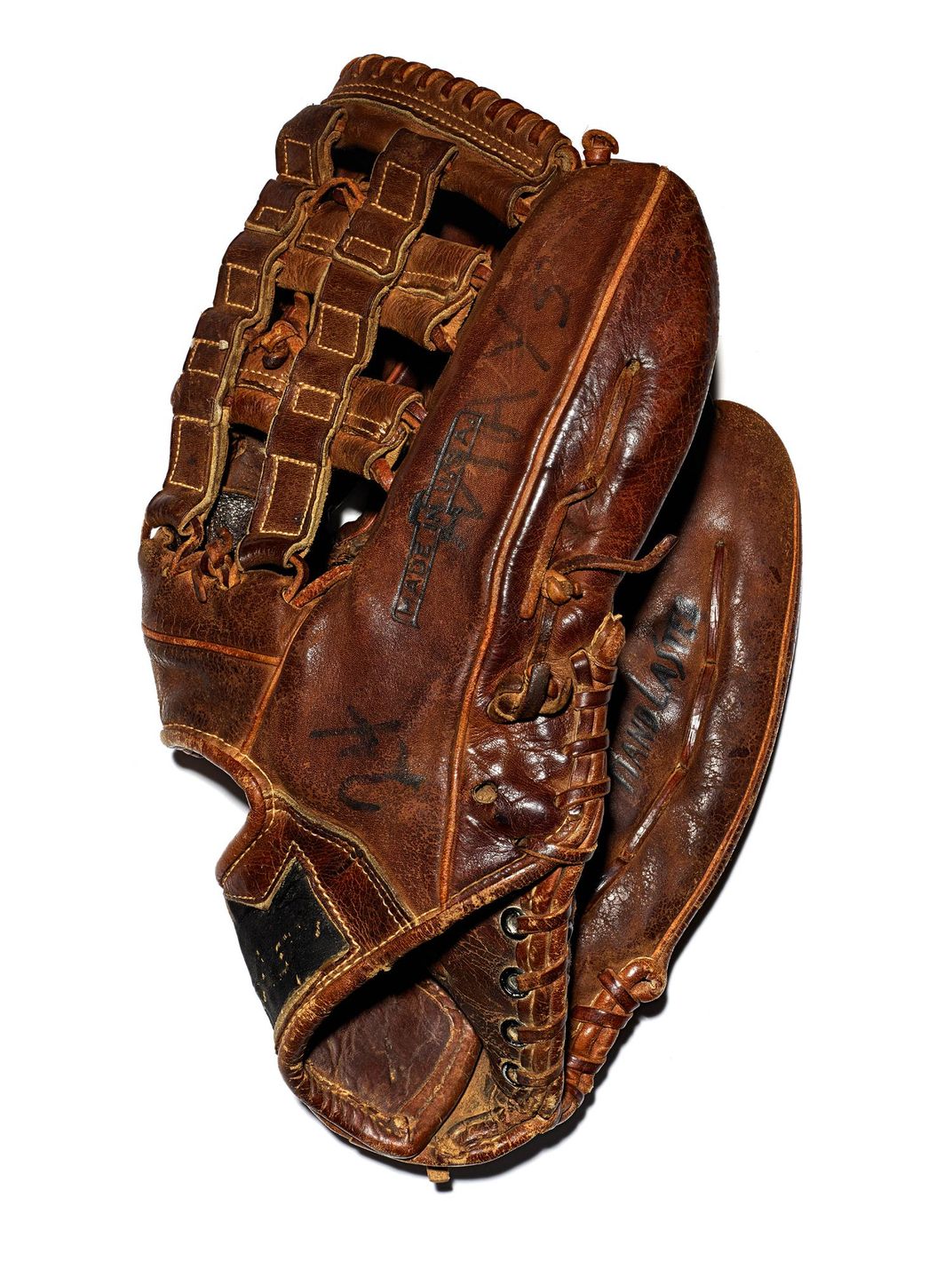Why Baseball Legend Willie Mays, Dead at 93, Will Never Be Forgotten
Even decades after he redefined the game, the 24-time All-Star continued to be revered by fans and historians alike for his incredible athleticism, spellbinding defense, powerful bat and admirable sportsmanship
:focal(1661x852:1662x853)/https://tf-cmsv2-smithsonianmag-media.s3.amazonaws.com/filer/77/c3/77c3a05e-f381-49bd-89a6-aa1329cfa6a8/npg_93_96-mays-m-r.jpg)
The most quickly recalled memory of Willie Mays is of a catch, where the catch somehow was not the most impressive part of the play.
With the score tied in Game 1 of the 1954 World Series, Mays, with his back to home plate and racing at full speed toward the center field wall at New York’s Polo Grounds, caught a prodigious drive from Cleveland’s Vic Wertz over his shoulder, more than 450 feet from home plate. A hit would have put Cleveland ahead of Mays’ New York Giants in the top of the eighth inning.
As soon as he caught the ball, Mays turned abruptly and threw it back to the infield in one motion, tumbling to the ground with his cap flying off.
Without Mays’ quick thinking and skill, Larry Doby—the runner on second base—might have been able to advance two bases on this ball hit to deep center field and give Cleveland the lead late in the game. Mays’ throw kept Doby at third base and also prevented the runner on first base from advancing. Cleveland did not score in that inning, and New York won the game in extra innings before going on to win the World Series in a sweep. ‘The Catch’ offered a snapshot of Mays’ style in one play: beautiful, sleek, powerful, efficient, elegant and brilliant.
On June 18, 2024, Willie Mays died at age 93, one of only three remaining players from the Negro Leagues so-called "golden age."
“Today, when a kid makes a catch over his shoulder, it’s still a Willie Mays catch,” said James S. Hirsch, author of Willie Mays: The Life, The Legend, in a 2018 interview. “Nearly 65 years later, and it’s amazing that Willie is still associated with it. Even if a third baseman catches the ball over his shoulder, the announcer will always say ‘it’s a Willie Mays catch.’ Most great athletes, if they’re associated with a single image or memory, that is rare in and of itself.”
This one Mays play is but one important achievement in a once-in-a-lifetime career that saw Mays win two Most Valuable Player Awards, hit four home runs in a game, and be chosen for 24 All-Star Games. Playing first in the Negro Leagues, Mays went on to become one of the greatest—if not the greatest—of Major League baseball players and to be part of the core of the first generation of African-American stars who helped to make the 1950s a remarkable era for the sport.
“I would say that Willie Mays was the second-most consequential black player in the history of baseball next to Jackie Robinson,” said Hirsch. “It was not because Willie was vocal. He was wary of speaking publicly about race because where he came from in the Deep South, in the 1930s and '40s, he was taught that an outspoken black man there could be arrested or lynched. So instead of speaking out about civil rights, he played baseball with extraordinary skill. By drawing the support, affection, and love of baseball fans across the country, that too had a huge impact on civil rights.”
Willie Mays is considered baseball’s finest five-tool player, which describes someone who excels at hitting for average, hitting for power, running the bases, throwing and fielding. Before Mays, as Hirsch noted, ballplayers were likely to be either high-average hitters (like Ty Cobb) or home run hitters responsible for driving in runs (like Babe Ruth).
By doing everything well, Mays “redefined the game of baseball,” said Hirsch. But it was also Mays’ style and his desire to entertain that fans recall. Mays didn’t just run the bases; he ran them with his cap flying off and an abandon which fans could not forget. He didn’t just catch the ball; he used a basket catch at waist level, a confident and sophisticated move which was not being used in the game at that time and which also put him in a better position to throw the ball.
Known as the ‘Say Hey Kid,’ a nickname of imprecise origin but which includes the ebullient, joy-filled exclamation ‘Say Hey’ that Mays would yell out, Mays’ playing career had four distinct arcs. He played first in the Negro Leagues; then in New York through 1957, where he, along with Mickey Mantle and Duke Snider, was one of the city’s three preeminent centerfielders; in San Francisco, after the team moved, from 1958 until early 1972; and then back in New York with the Mets from May 1972 through 1973, where he would become a valuable part-time player on a pennant-winning National League team.
Three items from late in Mays career are in the collections of the Smithsonian’s National Museum of American History. Thomas Tull, a businessman, film producer and part-owner of the Pittsburgh Steelers, donated a cap and cleats that Mays used, as well as a glove clearly marked in ink with Mays’ name and uniform number. Mays signed both the cap and cleats, and, on the cap, Mays included the words ‘Say Hey.’
Mays wore all of these items with the San Francisco Giants between 1970 and 1972.
“When someone sees these items, there are three things that he or she should take away,” says Eric Jentsch, the museum's curator of popular culture and sports. “That Mays was a great baseball player, that Mays was African-American, and that Mays was important to many Americans. When President Obama presented Willie Mays with the Presidential Medal of Freedom in 2015, Obama said that it was ‘because of giants like Willie that someone like me could even think of running for president.’”
Mays made a less-celebrated, but still impressive catch, on April 11, 1970, shortly before his 39th birthday, when he leaped and reached over the Candlestick Park fence to catch a ball hit by Bobby Tolan. Mays fell to the ground on top of rightfielder Bobby Bonds, still holding onto the ball.
Carl Erskine, who pitched against Mays for nine seasons with the Brooklyn and Los Angeles Dodgers and was Mays’ teammate on the 1954 National League All-Star team says: “Several times, I have received questions in my fan mail asking me to choose the best player I ever saw. I have always said Mays because I saw him do so many things in so many ways to beat you, with his bat, his glove and his arm. He was the All-Star of All-Stars.”
Even if he had not been one of the finest hitters in the history of baseball, Mays would be remembered for his superior defense alone. “Soon after Mays reached the big leagues, he was proclaimed the greatest centerfielder in the game,” says John Thorn, the official historian of Major League Baseball. “A line once applied to Tris Speaker’s glove—‘where triples go to die’—has attached itself to Willie’s glove ever since.”
/https://tf-cmsv2-smithsonianmag-media.s3.amazonaws.com/filer/77/c3/77c3a05e-f381-49bd-89a6-aa1329cfa6a8/npg_93_96-mays-m-r.jpg)
The glove includes a patch, which Jentsch says Mays “put in himself because he must have really liked this glove and used it often. It is a McGregor glove which is well-worn.” Hirsch noted that players in Mays’ time kept and tended to their equipment: “I assume Willie was fastidious with his equipment. It was a different era back then. Now, players go through bats and gloves so quickly. Partly because they didn’t want to pay for a replacement, I think players were more careful with their equipment back then.”
Hank Aaron and Mays were the finest power hitters of their era, ultimately retiring with the first and third highest home run totals in baseball history, respectively. Mantle, though plagued by injury, can be favorably compared to Mays, and Barry Bonds, Mays’ godson, is the modern player most often thought to rival Mays’ stature as an offensive force.
Less tangibly, Mays had extraordinary baseball intelligence, as he seemingly always knew how to make the correct next move on a baseball field. “I always heard that Babe Ruth had great instincts for baseball, that Ruth would never throw to the wrong base or make a mental mistake,” says Erskine. “I thought Willie was like that.”
Many great ballplayers, as Hirsch points out, are associated with one particular statistic. Ruth, for instance, is associated with the 60 home runs he hit in 1927, while Ted Williams is remembered for batting .406 in 1941. Mays is best remembered for his broader career rather than for a single number:
“What made Willie so appealing was how he played the game: the grace and the tenacity and the sheer entertainment value that he brought to playing the game, the style with which he played,” said Hirsch. “Willie was very much influenced by his playing in the Negro Leagues growing up, where teams played to win but it was also about entertainment. Willie told me his objective when he came to the ballpark was not just to help his team win but to leave the fans with something to talk about when they left the ballpark. So that was the genesis of the basket catch and the hat flying off his head. Part of Willie’s appeal was how he played the game, with that style. And he was just so good.”
/https://tf-cmsv2-smithsonianmag-media.s3.amazonaws.com/accounts/headshot/JMcMurray_photo.jpeg)




/https://tf-cmsv2-smithsonianmag-media.s3.amazonaws.com/filer/f3/a3/f3a37c49-ca17-4fae-bcc6-699d78ad6097/et2018-02155_display.jpg)


/https://tf-cmsv2-smithsonianmag-media.s3.amazonaws.com/accounts/headshot/JMcMurray_photo.jpeg)